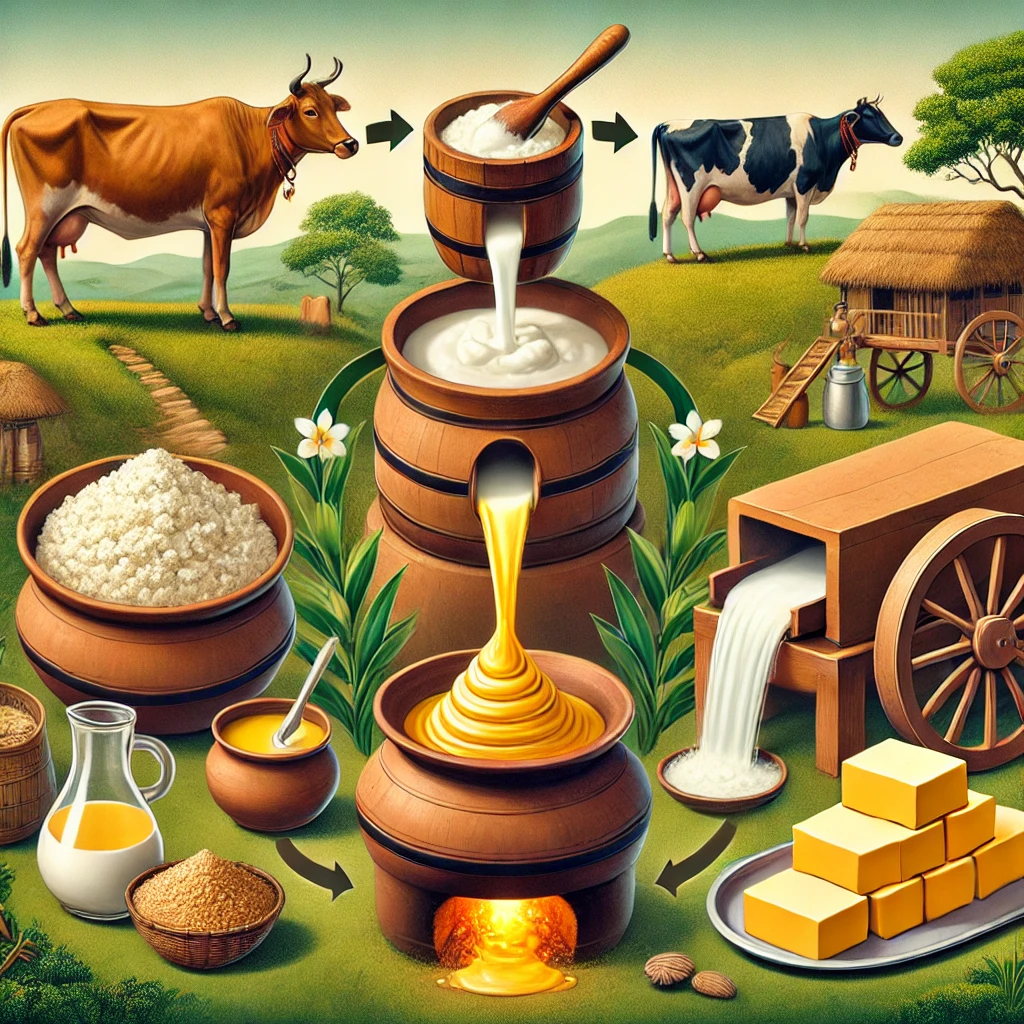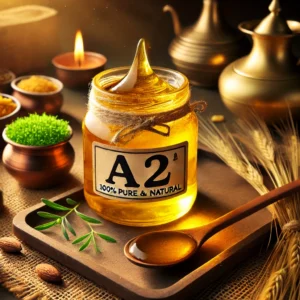The Making Process of A2 Ghee: A Blend of Tradition and Purity
A2 Ghee, known for its nutritional richness and health benefits, is not just a product but a tradition deeply rooted in Indian culture. The process of making A2 Ghee is as significant as its benefits, as it involves time-honored methods that preserve its purity and potency. Let’s delve into the meticulous and traditional process of making A2 Ghee.
Step-by-Step Process of Making A2 Ghee
1. Sourcing A2 Milk
- The journey begins with obtaining high-quality milk from indigenous cow breeds such as Gir, Sahiwal, or Red Sindhi.
- These cows produce milk containing the A2 beta-casein protein, which is considered more nutritious and easier to digest than the A1 protein found in other milk varieties.
2. Making Curd (Yogurt)
- Fresh A2 milk is boiled and allowed to cool to a lukewarm temperature.
- A small amount of starter culture (curd) is added to the milk and left undisturbed overnight to ferment into curd.
- This curd forms the base for the traditional ghee-making process.
3. Churning the Curd
- The curd is churned using a wooden churner or “bilona,” an age-old method used to separate butter from the buttermilk.
- This process can be done manually or with the help of machines, but the traditional hand-churning method is preferred for its authenticity and enhanced nutritional value.
- The result is a creamy layer of butter, which is collected and separated from the liquid buttermilk.
4. Boiling the Butter
- The collected butter is then heated slowly over a low flame in a heavy-bottomed vessel.
- As the butter melts, it begins to clarify and release its moisture.
- The ghee starts to take shape as milk solids separate and settle at the bottom, leaving behind a golden-yellow liquid.
5. Filtering the Ghee
- Once the milk solids turn light brown and a nutty aroma fills the air, the ghee is carefully filtered to remove any remaining residues.
- The resulting liquid is pure A2 Ghee, rich in flavor and nutrients.
6. Storing the Ghee
- The filtered ghee is allowed to cool slightly before being poured into sterilized glass jars or containers.
- Proper storage ensures that the ghee retains its freshness, aroma, and nutritional properties for a long time.
Why the Traditional Method Matters
The traditional “bilona” method of making A2 Ghee is time-consuming but ensures that the ghee retains its medicinal and nutritional properties. Unlike commercial ghee-making processes, this method avoids excessive heat or mechanical intervention, preserving the natural essence of the ghee.
Key Features of A2 Ghee Made Using the Traditional Method
- 100% Natural: Free from preservatives, additives, or artificial flavors.
- Rich in Nutrients: Retains essential fatty acids, vitamins, and antioxidants.
- Unique Aroma: The slow-cooking process gives A2 Ghee its distinct nutty fragrance.
- Better Digestion: The traditional method enhances the bioavailability of nutrients, making it easier to digest.
Uses of A2 Ghee in Daily Life
- Cooking and Frying: A2 Ghee’s high smoke point makes it perfect for Indian cuisines.
- Ayurvedic Medicine: Used in therapies to balance doshas and improve health.
- Skincare: Acts as a natural moisturizer and remedy for burns or dry skin.
Conclusion
The process of making A2 Ghee is a harmonious blend of tradition, purity, and care. From sourcing the best A2 milk to slow-cooking it to perfection, every step is designed to ensure that the final product is as nutritious and pure as nature intended.
By choosing A2 Ghee, you’re not just embracing better health but also honoring a timeless tradition that has been passed down through generations. Bring home this golden elixir and experience its unmatched benefits today!



